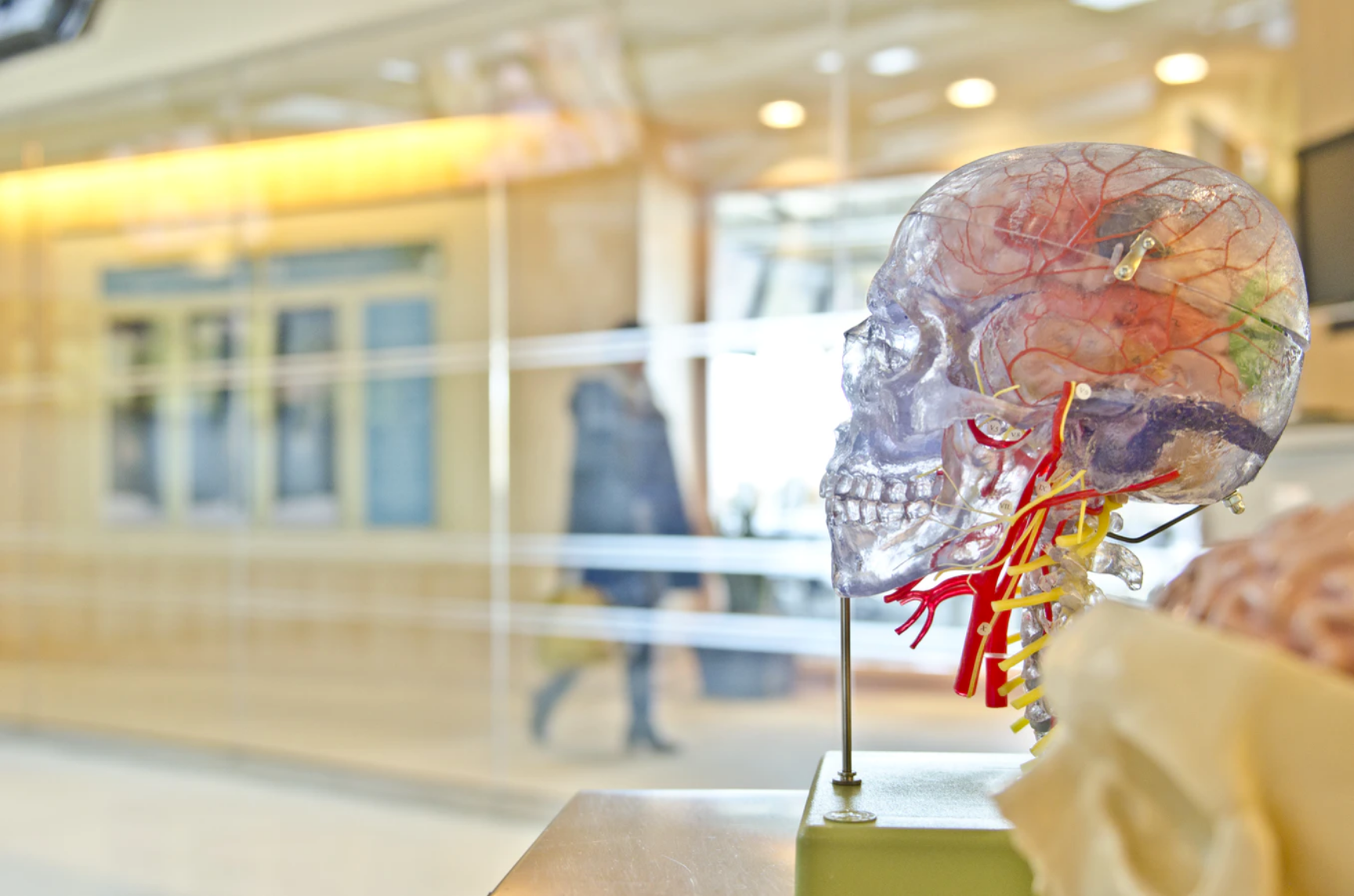Neurological disorders affect the nervous system and/or systems that interact with it.
Structural, biochemical or electrical abnormalities in the brain, spinal cord, nerves, nerve-to-muscle junction, or muscle can result in a range of symptoms such as muscle weakness, loss of sensation, incoordination, seizures, memory difficulties, involuntary movements, and pain to name some symptoms since clinical presentations can be broad.
We will use obtained training to understand and interpret your symptoms and with the help of a specialized physical examination make sense of what anatomical aspect of the system might be affected. Neuroimaging, electrodiagnostic studies, and laboratory testing are as well used to help guide diagnoses, monitor treatments, and are important tools used by a Neurologist.
Common Neurological Disorders
MIGRAINES, AND OTHER TYPES OF HEADACHE SYNDROMES

Migraines are a recognized name for intense recurring headaches. Migraine headaches can last days in a row and they can be debilitating, stopping you to be able to do your normal activities. Pain tends to be pulsating and it can be associated with various symptoms including nausea, vomiting, sensitivity to light or sound, and others. In some people, the headaches can be triggered by certain foods, drinks, or odors. These triggers can be very specific to you.
If you are suffering from migraines we might be able to help you by providing a proper diagnoses, exclude other potentially serious conditions that can manifest with headaches, and offer treatment options to control them. There are also other types of primary headache syndromes such as tension type headaches which differ from migraines and treatment options vary.
SYNCOPE

Passing out or collapsing with either impairment in consciousness or loss of consciousness can be a scary situation. Causes for this type of accident can include neurological dysfunction and many times neurological evaluation might be needed. Collaboration with various other specialties is typically how this events are approached.
SEIZURES AND EPILEPSY

Seizures are episodes in where there are abnormal electrical discharges in the brain which can cause changes in behavior and body functioning. Some people might experience a provoked single seizure in their lifetime without necessarily an increase risk for recurrence, yet there are many factors that come into play and seizures can be a sign of more serious problem. A dedicated specialized neurological evaluation is in order if you have experienced even a single seizure.
Recurrent seizures are known as Epilepsy. Some known causes of seizures and epilepsy include: developmental abnormalities in the brain; infections that injure the brain; lack of oxygen to the brain; disturbance in blood circulation to the brain, tumors of the brain, and previous trauma.
MULTIPLE SCLEROSIS AND OTHER DEMYELINATING OR INFLAMMATORY CONDITIONS
Multiple sclerosis (MS) is a neurologic disorder in where there is an abnormal immune response of our body, which attacks our central nervous system cells in the brain and/or spinal cord. In particular the insulation that normally covers our nerves gets disrupted. This impairs the normal impulse transmission of our nerves which translate into clinical neurological deficits, such as sensory loss, weakness, lack of coordination, visual deficits, etc. MS can present with a wide range of neurological symptoms and discussing them with a neurologist can help guide further evaluation, if indicated. There are potent immunomodulatory therapies now a days that can be very helpful in patients with MS.
STROKES AND TRANSIENT ISCHEMIC ATTACK (TIA)
A stroke is caused by the sudden loss of blood flow to the brain or bleeding in or around the brain. Brain cells can not be for too long without oxygen and when this happens unfortunately this cells stop working and they might never recover. When nerve cells in the brain stop working, the function of body parts they control is impaired or lost. Depending on the part of the brain affected, people can lose speech, sensation, muscle strength, coordination, vision, to name some symptoms.
Strokes can be disabling and even life-threatening although in some cases people have significant recovery. There are certain conditions that can increase the risk of having a stroke, and discussing them with your primary care provider and/or neurologist can be preventive. After a stroke secondary preventive measures can be implemented to decrease the risk of recurrent strokes.
Transient Ischemic Attacks or TIA, are as the word states brief episodes where the brain does not receive appropriate blood flow, hence oxygenation, and clinically manifest with transient deficits in the body that fully resolve. TIA should be evaluated with seriousness by a neurologist since they can be the sentinel sign of a more ominous event, a stroke.
DEMENTIA AND OTHER COGNITIVE DISORDERS

Dementia is a global brain dysfunction that manifest with cognitive and/or behavioral impairments. The most common type of dementia is Alzheimer’s disease but there are other types of dementia. Early recognition and implementation of therapy is imperative. There are many resources for patients with dementia as well as their family member and/or caregivers.
NEURALGIAS OR COMPLEX REGIONAL PAIN SYNDROMES

Complex regional pain syndrome is an uncommon form of chronic pain that usually affects an arm or a leg. Complex regional pain syndrome typically develops after an injury, surgery, stroke or heart attack, but the pain is out of proportion to the severity of the initial injury.
MOVEMENT DISORDERS

Parkinson’s disease is a progressive disorder of the nervous system that affects your movement. It develops gradually, sometimes starting with a barely noticeable tremor in just one hand. But while a tremor may be the most well-known sign of Parkinson’s disease, the disorder also commonly causes stiffness or slowing of movement. There are various therapeutic options that can be offered. Other movement disorders for what treatment options exist include dystonias, and tremors.




